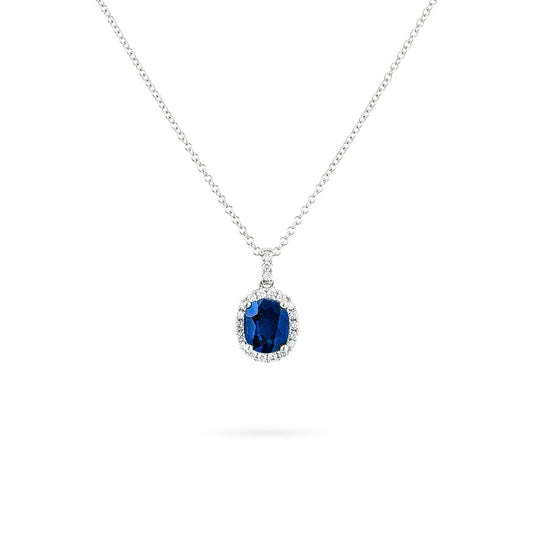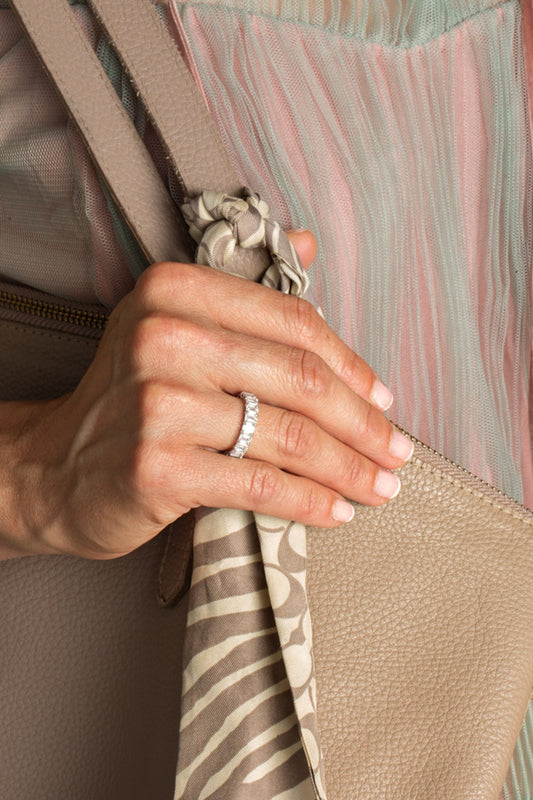Why Diamond Certification Matters
Buying a diamond is a significant investment, whether it’s for an engagement ring, a timeless jewellery piece, or a personal keepsake. But how can you be sure you’re getting what you pay for? This is where diamond certification comes in.
A diamond certificate (also known as a grading report) provides an unbiased assessment of a diamond’s quality, ensuring it meets the standards of authenticity, value, and craftsmanship. Understanding certification helps you make an informed decision, ensuring that your diamond is as brilliant on paper as it is in person.
This guide will take you through everything you need to know about diamond certification—what it is, why it matters, and how it affects your purchase.
What is a Diamond Certificate?
A diamond certificate is an official document issued by an independent gemological laboratory that evaluates a diamond’s quality based on specific criteria. It provides a detailed analysis of the diamond’s characteristics, including:
- Carat Weight – Carat measures weight. One metric carat is 200 milligrams.
- Cut Grade – This is based on seven components that help define the quality of the cut. The first three are based on appearance: fire, sparkle, and brilliance. The other four are based on design and craftmanship: weight ratio, durability, polish, and symmetry.
- Colour Grade – A scale from D (colourless) to Z (light yellow/brown).
- Clarity Grade – Identifies inclusions (internal flaws) and blemishes (external marks).
- Other Details – Fluorescence, symmetry, polish, and proportions.
Think of it as a passport for your diamond—verifying its authenticity and providing peace of mind when purchasing or reselling.
The Leading Diamond Certification Labs
Not all diamond certificates are created equal. Different gemological labs have varying grading standards, which can impact a diamond’s value and credibility. Here are the most recognised diamond certification authorities:
-
GIA (Gemological Institute of America) – The Gold Standard
- The most trusted and widely recognised certification body.
- Known for its strict and unbiased grading.
- Ideal for buyers looking for reliable quality assurance.
-
IGI (International Gemological Institute) – Popular for Lab-Grown Diamonds
- Commonly used for lab-grown diamonds and commercial jewellery.
- Grading is generally less strict than GIA.
- More prevalent in Europe and Asia.
-
HRD (Hoge Raad voor Diamant) – European Expertise
- Based in Antwerp, Belgium, a major diamond hub.
- Used primarily in European markets.
- Grading is similar to GIA but slightly more lenient.
-
AGS (American Gem Society) – Focused on Precision Cut Grading
- Uses a 0-10 grading scale (unlike GIA’s letter-based system).
- Renowned for its strict evaluation of diamond cut quality.
When purchasing a certified diamond, GIA certification is the most trusted worldwide, ensuring you receive a diamond graded with accuracy and consistency.
How Diamond Certification Affects Value and Pricing
A diamond’s price isn’t just determined by its appearance—it’s largely influenced by its certification and grading report. Here’s why:
- Certified Diamonds Hold Their Value – A certified diamond is easier to resell and appraise.
- Ensures You Pay the Right Price – Certification confirms the quality, preventing overpayment.
- Protects Against Misrepresentation – Without certification, you risk buying a diamond of lower quality than advertised.
On the other hand, uncertified diamonds are cheaper but come with risks—there’s no guarantee of authenticity, making them harder to insure or resell.
Understanding the 4Cs on a Certification Report
Every certified diamond is graded on the 4Cs, which determine its quality and price.
- Carat – How Big is the Diamond?
- A carat is a unit of weight, with 1 carat equalling 0.2 grams.
- Larger diamonds are rarer and increase exponentially in price.
- Cut – The Most Important Factor for Sparkle
- The cut grade measures how well a diamond reflects light.
- Excellent/Ideal cuts sparkle the most, while Poor cuts appear dull.
- Colour – Less is More
- Graded from D (colourless) to Z (visible yellow/brown tint).
- Colourless diamonds (D-F) are the rarest and most valuable.
- Clarity – Flawless or Included?
- Assesses internal (inclusions) and external (blemishes).
- Ranges from Flawless (no inclusions) to Included (visible flaws).
A diamond’s cut has the biggest impact on its beauty, so it’s best to prioritise an excellent or ideal cut when choosing a certified stone.
Are All Diamond Certificates the Same?
Not all labs have the same grading standards. Some are more lenient than others, meaning a diamond graded as "VS1" (very slightly included) by one lab might be a "VS2" elsewhere. GIA is the most consistent and globally respected, making it the preferred choice for buyers.
Beware of in-house or non-reputable certification labs, as they may overstate a diamond’s quality. Always cross-check the certificate with an independent gemologist if in doubt.
Certified vs. Non-Certified Diamonds: Pros and Cons
- Feature- Certified Diamonds vs Non-Certified Diamonds
- Quality Assurance- Verified by experts vs No formal verification
- Price Transparency- Reflects true value vs Priced at seller’s discretion
- Resale Value- Easier to resell vs Harder to resell
- Risk Level- Low risk vs Higher risk
Bottom line: Always choose a certified diamond to guarantee authenticity and value.
Lab-Grown Diamonds and Certification
Lab-grown diamonds are growing in popularity, but do they need certification too? Absolutely.
- The IGI and GIA both certify lab-created diamonds.
- Grading is identical to natural diamonds but includes a note stating it's lab-grown.
- Certification ensures you’re buying a genuine lab-grown stone, not a diamond simulant like moissanite or cubic zirconia.
If you’re considering a lab-grown diamond, ensure it comes with an IGI or GIA certification for transparency.
Tips for Buying a Certified Diamond
- Always ask for a certificate from a reputable lab like GIA or IGI.
- Verify the certificate online using the lab’s official report check.
- Match the certificate with the diamond (check laser inscriptions).
- Be cautious of ‘too good to be true’ deals on uncertified stones.
Conclusion: Making an Informed Diamond Purchase
Buying a diamond is an emotional and financial investment, and certification is your guarantee of quality and value. Whether you’re choosing a natural or lab-grown diamond, always opt for a GIA, IGI, or HRD-certified stone to ensure you get what you pay for.
At Upon a Star Diamonds, we offer certified diamonds for engagement rings, ensuring the highest quality and peace of mind. Additionally, we provide customizable options for diamonds over 0.5ct, allowing you to select the perfect size and style for your unique piece.
Browse our collection today and find the perfect certified diamond for you. ✨



